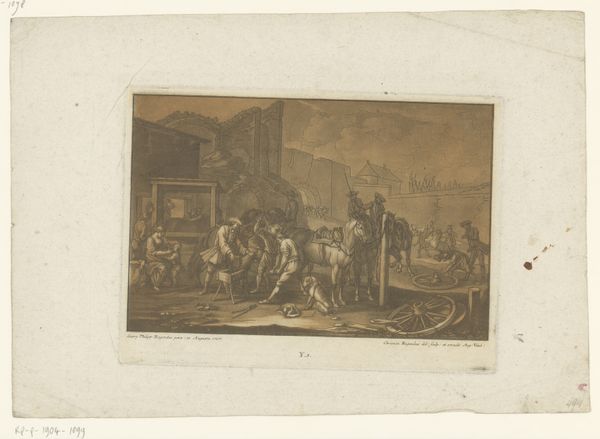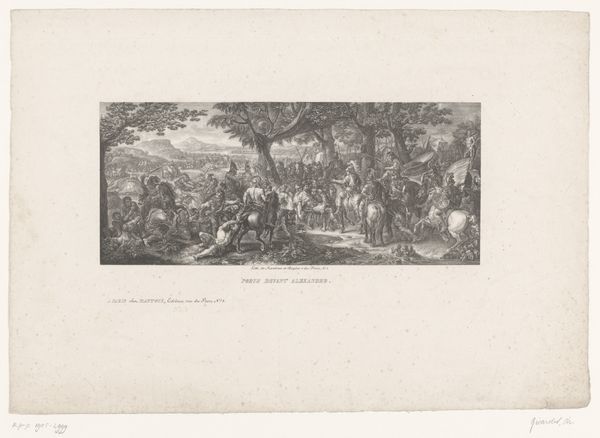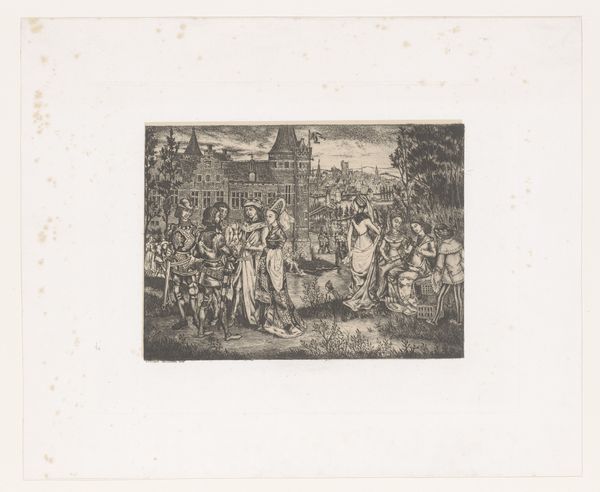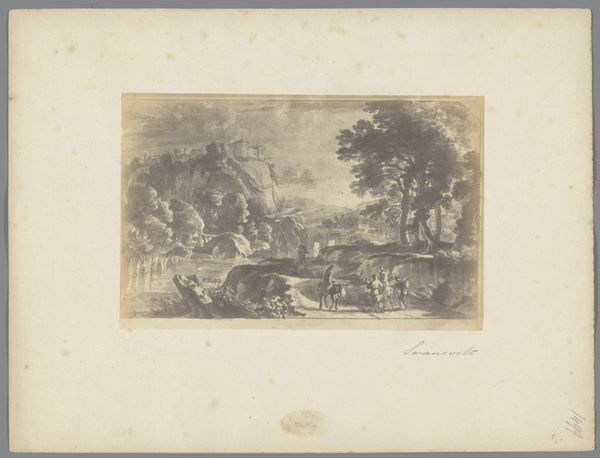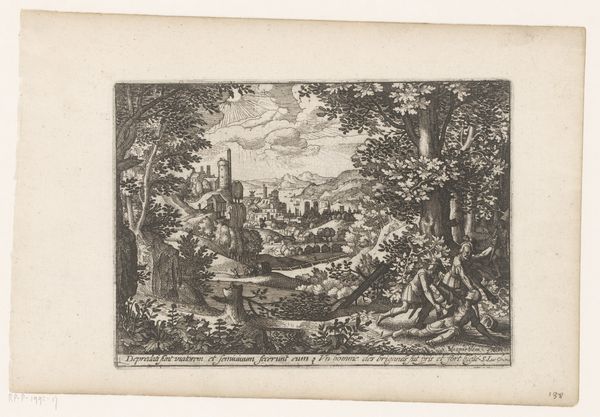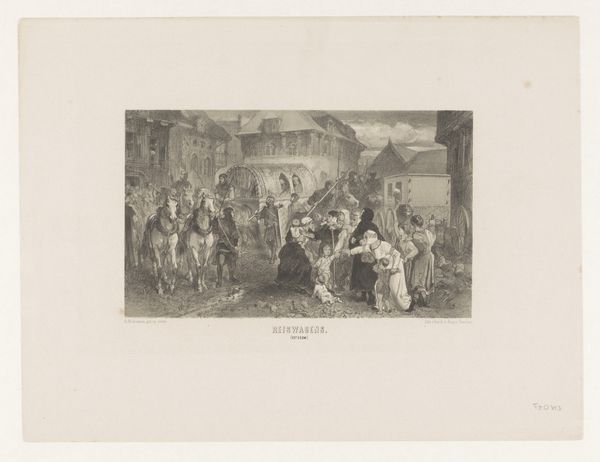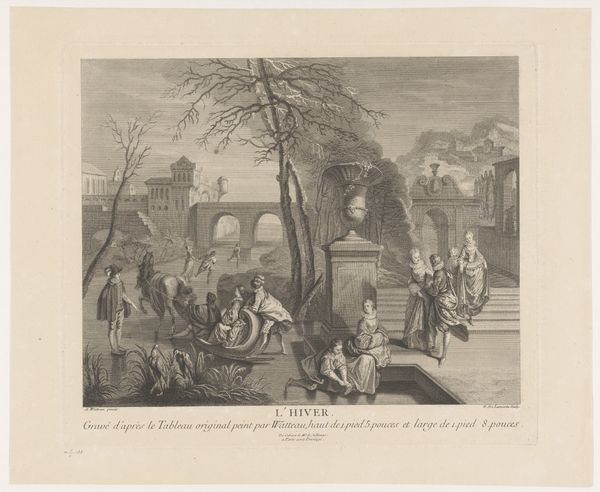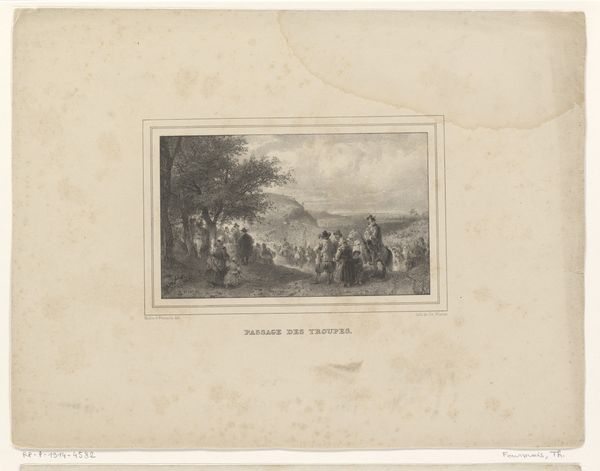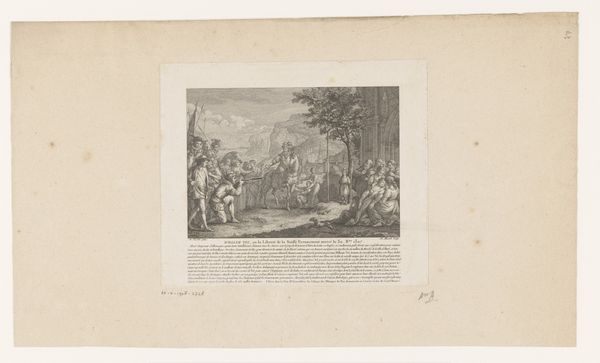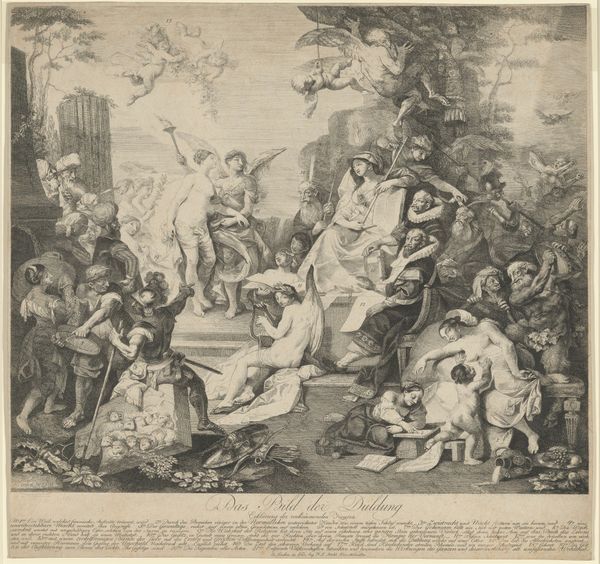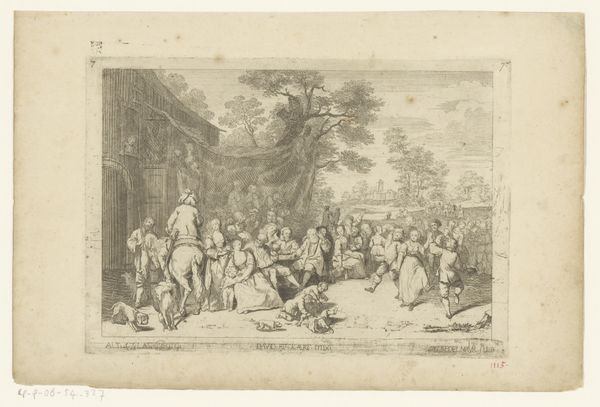
#
photo of handprinted image
#
aged paper
#
toned paper
#
muted colour palette
#
ink paper printed
#
old engraving style
#
personal sketchbook
#
ink colored
#
watercolour illustration
#
watercolor
Dimensions: height 294 mm, width 398 mm
Copyright: Rijks Museum: Open Domain
Editor: So, this is "Kindermoord te Betlehem," dating from around 1675 to 1727, by Claude Duflos. It’s an old print, so the paper has this lovely aged quality. The scene is quite chaotic, but the architectural background feels... almost staged? What can you tell me about this piece? Curator: This print throws into stark relief the performative nature of power and tragedy in the 17th and 18th centuries. The composition, while seemingly focused on the massacre itself, is equally invested in placing this event within a recognizable, almost theatrical, cityscape. Editor: The staged aspect. Yes! Curator: Precisely. Think about how power was visually disseminated. Prints like these circulated widely, shaping public perception of biblical events, but also subtly reinforcing societal hierarchies and the role of institutions, both religious and secular. Is this brutality really the focus, or does the "Kindermoord" provide an opportunity to showcase the power that oversees, judges, and records it? The pyramid, the classical architecture - it places the scene both in the past and symbolically elevates it to a near mythical status. How do you think such a composition may shape our reading of the religious narrative? Editor: It's almost desensitizing. By placing the violence within this grand setting, the human suffering feels… less immediate. The architectural references dominate the scene, while the families are in the margins. Curator: Exactly! It highlights how artistic representations of historical or religious narratives are never neutral. They're always embedded within socio-political contexts and served to reinforce, or occasionally subvert, existing power structures. Editor: This really makes me reconsider how art serves these broader cultural functions, shaping our understanding beyond just the aesthetic experience. Curator: Indeed. And appreciating that historical context enables a much richer reading of what is actually going on within the frame.
Comments
No comments
Be the first to comment and join the conversation on the ultimate creative platform.
